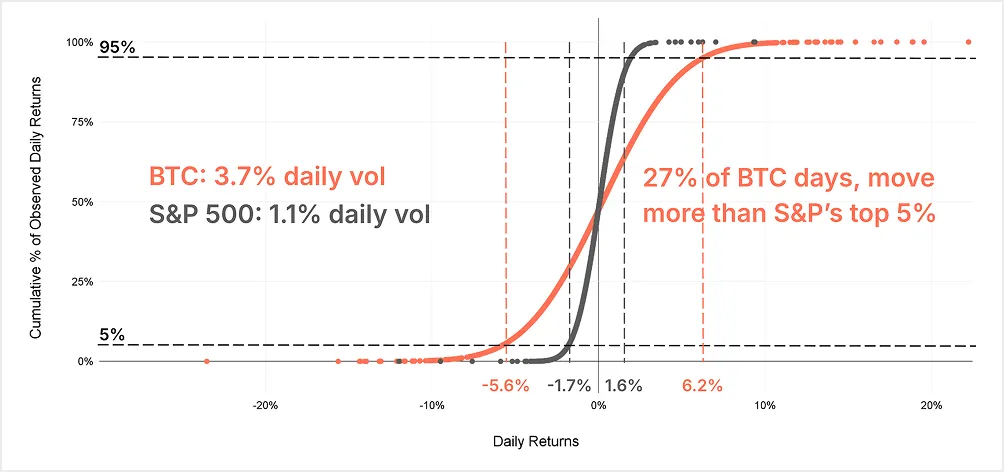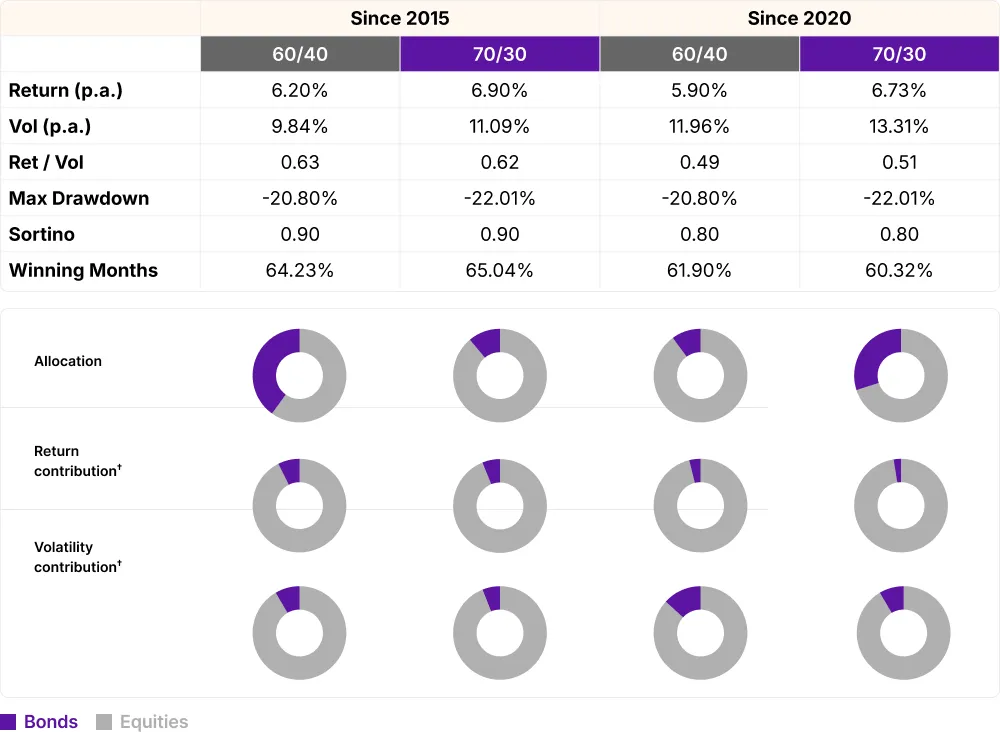

Multi generational wealth preservation with crypto assets | AI generated image by XBTO
Multi generational wealth preservation with crypto assets | AI generated image by XBTO
Traditionally focused on conservative investments like real estate, equities, and bonds, family offices are now navigating the dynamic world of digital assets to diversify portfolios, hedge against inflation, and align with the preferences of younger, tech-savvy generations.
Family offices in Asia and Europe are increasingly active in the crypto sector, with regional regulatory environments shaping their strategies. Many family offices are now exploring or investing in digital assets as part of a broader industry trend, with most family offices and investors actively investing and allocating funds to crypto alongside traditional assets.
The result? A new era of private wealth management.
This article explores how family office crypto management is reshaping private wealth digital assets strategies, offering UHNW crypto strategies that balance innovation with the imperative of long-term wealth preservation.
The rise of crypto assets in family office portfolios
Family offices, tasked with managing the wealth of UHNW individuals and families, have historically prioritized stability and preservation over speculative ventures. However, the landscape is shifting.
According to a 2024 report by BNY Mellon Wealth Management, 39% of family offices are either invested in or actively exploring cryptocurrencies, with smaller offices (managing less than $1 billion) showing particularly high interest, as 41% plan to increase their exposure. This trend is driven by several factors:
- Generational shift: Younger, digital-native heirs are increasingly influencing investment decisions. Millennials and Gen Z, who view cryptocurrencies like Bitcoin and Ethereum as integral to modern portfolios, are pushing family offices to adopt private wealth digital assets.
- Diversification and returns: Crypto assets can deliver uncorrelated returns, offering a potential hedge against traditional market swings. Our latest research provides a practical framework for Bitcoin allocation, showing how different portfolio sizes can impact returns, volatility, and overall performance.
- Regulatory clarity: Clearer regulations and the approval of spot Bitcoin ETFs in the US have strengthened institutional confidence. Our latest report shows why a 2.5–5% allocation to Bitcoin can improve risk-adjusted returns, without adding overall portfolio risk.
- Technological appeal: Blockchain technology, the backbone of crypto assets, offers transparency, security, and efficiency. Tokenization of real-world assets (RWAs) like real estate or art enhances liquidity and fractional ownership, aligning with UHNW preferences for alternative investments.
Despite these drivers, crypto’s volatility, regulatory complexities, and cybersecurity risks pose significant challenges. Family offices must adopt robust UHNW crypto strategies to integrate digital assets effectively while safeguarding wealth across generations.
Challenges in family office crypto management
Managing crypto assets within a family office context requires navigating a unique set of challenges:
- Volatility and valuation: A comparative analysis of daily return distributions between Bitcoin and the S&P 500 highlights key differences in their risk and reward profiles. Bitcoin exhibits a much wider spread, both on the downside and the upside. While the S&P 500’s worst 5% of days typically see losses of around –1.7%, Bitcoin’s 5% tail extends to –5.6%. But that same distribution gives you access to upside: Bitcoin’s best 5% of days hit +6.2%, compared to just +1.6% for the S&P. In quantitative jargon, this actually means that the distribution is skewed to the positive side.More importantly, this isn’t rare. Roughly 27% of all BTC trading days exceed the S&P’s 95th percentile performance. And here’s the key insight: volatility is not risk. Volatility is movement. The point isn’t to eliminate volatility. It’s to understand it. To price it. And to use it. Because this embedded movement is precisely what allows Bitcoin to shift from a passive exposure to an actively managed, income-generating asset.
- Regulatory complexity: The regulatory landscape for crypto varies across jurisdictions, requiring family offices to navigate a patchwork of rules. For instance, Hong Kong has launched crypto ETFs, while Singapore leads in structured regulatory frameworks. The EU’s Markets in Crypto Assets (MiCA) regulation and evolving US policies add further layers of compliance. Family offices need comprehensive legal advice to ensure compliance across multiple jurisdictions.
- Cybersecurity risks: The risk of hacking and cybercrime is a top concern, with 77% of family offices citing it as a barrier to crypto investment. Self-custody of crypto assets, while appealing to younger generations, exposes families to risks if private keys are lost or compromised. Secure custodial solutions and multi-signature (multi-sig) wallets are critical for mitigating these risks.
- Estate planning complexities: Crypto assets require specialized estate planning to ensure seamless intergenerational transfer. Without proper documentation of private keys or recovery mechanisms, heirs risk losing access to significant wealth.
- Advisor knowledge gaps: Many traditional wealth advisors lack the expertise to navigate digital assets, leaving a critical service gap. To serve clients effectively, advisors need to refine their strategies for crypto, address its unique risks and opportunities, and collaborate with specialized asset managers to stay ahead.
These challenges underscore the need for a strategic, informed approach to family office crypto management, blending innovation with the prudence required for multi-generational wealth preservation.
Portfolio construction: allocations, diversification, and risk
Traditional portfolios may appear balanced - a 60/40 or 70/30 split between equities and bonds. But beneath the surface, the picture is very different.
Family offices are now allocating a portion of their funds to digital assets, alongside public equities and hedge funds, as part of a broader diversification strategy.
Since 2015, equities have driven the majority of both returns and risk. While bonds may make up 30–40% of the portfolio allocation, their actual contribution is marginal. What appears to be diversified is, in reality, heavily concentrated. It is now essential to track the performance of digital assets and crypto investments, and compare them to traditional asset classes like public equities and hedge funds, as part of effective portfolio management.
What level of Bitcoin exposure would have maximized return efficiency while preserving the original portfolio volatility?
To answer that, we developed a proprietary Optimality Score*, a metric that balances return enhancement with structural proximity to the original 70/30 allocation. It rewards portfolios that boost performance without distorting portfolio structure. That’s where we landed on the 4% allocation (i.e., “Max Optimality”).
According to our analysis, a reasoned range of 2.5%–5% is more likely to withstand different market environments, adapt across cycles, and deliver more robust, more resilient out-comes over time.
The role of active management in multi-generational wealth preservation
Active management plays a pivotal role in effective family office crypto management, offering strategic expertise critical for multi-generational wealth preservation. Given the unique complexities and inherent volatility of crypto assets, active management enables family offices to transform potential risks into substantial opportunities for wealth enhancement.
Active management strategies specifically support private wealth digital assets by addressing the dynamic nature of the crypto market:
- Trend-following strategies: Actively identifying and capitalizing on sustainable market trends helps enhance returns and manage exposure during market downturns, preserving wealth across generations.
- Derivatives and hedging strategies: Using advanced financial instruments like options and futures, active managers mitigate volatility, strategically accumulate crypto assets, and optimize risk-adjusted returns, providing stability essential for multi-generational asset protection.
- Sophisticated risk management: Comprehensive processes—including strategic position sizing, stop-loss orders, and hedging—safeguard the portfolio's integrity, crucial for family offices aiming to sustain wealth through volatile market conditions and across generations.Family offices have significant concerns regarding security, regulation, and operational risks, and are relying on robust protocols to protect their reputation in the digital asset space.
Through active management, family offices can convert crypto holdings from passive investments into dynamic, income-generating components of their broader asset portfolios. This proactive approach leverages volatility as a strategic advantage, aligning closely with the long-term objectives of multi-generational wealth preservation.
To explore further the critical role of active management in safeguarding digital wealth across generations, download our comprehensive whitepaper, "The Role of Active Management: The Next Step in Investing in Digital Assets."
Best practices for integrating crypto into multi-generational wealth strategies
To successfully incorporate crypto assets into private wealth digital assets portfolios, family offices can adopt the following best practices, grounded in expertise and tailored to UHNW needs:
Family offices should approach crypto as an alternative asset class, similar to private equity or real estate, with allocations typically ranging from 1-10% depending on risk tolerance. Key considerations include:
- Diversification across crypto assets: Beyond Bitcoin and Ethereum, family offices can explore stablecoins for stability, tokenized RWAs for liquidity, and DeFi protocols for yield generation .Investing directly in tokens and other digital assets can further diversify and strengthen the portfolio.
- Risk-adjusted returns: Use metrics like Sharpe ratios and stress testing to assess crypto’s impact on portfolio risk.
- Long-term horizon: Bitcoin’s low correlation with traditional assets makes it a strong long-term store of value, ideal for wealth preservation.
Security is paramount in family office crypto management. Family offices can choose between self-custody, third-party custodians, or hybrid solutions:
- Self-custody: Suitable for tech-savvy families, self-custody requires robust security measures like hardware wallets and multi-sig frameworks to prevent single points of failure. Detailed instructions in wills are essential for heirs to access assets.
- Third-party custodians: Institutional-grade custodians offer regulated, insured storage, reducing cyber risks.
- Multi-sig wallets: These require multiple approvals for transactions, enhancing security and aligning with fiduciary oversight.
Family offices should also conduct regular cybersecurity audits and educate family members on phishing and fraud prevention.
Crypto’s unique nature demands specialized estate planning to ensure seamless wealth transfer. Key strategies include:
- Trusts and LLCs: Structuring crypto holdings in dynastic trusts or LLCs provides privacy, tax efficiency, and asset protection.
- Asset registers: Maintain detailed records of private keys, wallet addresses, and recovery phrases, stored securely with trusted third parties.
- Education for heirs: Engage next-generation family members in crypto education to prepare them for managing digital assets.
It is essential to ensure that digital assets are properly held and can be transferred to future generations as part of a comprehensive estate plan.
Family offices must work with legal and tax advisors to address jurisdictional nuances:
- Regulatory compliance: Engage advisors familiar with local and cross-border regulations, such as MiCA in the EU or Singapore’s digital asset frameworks.
- Tax planning: Crypto transactions can trigger capital gains taxes, varying by jurisdiction. PwC recommends tailored tax strategies for direct investments and trust structures.
- Valuation processes: Establish standardized valuation methodologies, leveraging real-time market data to ensure accurate reporting.
The future of family office crypto management
As digital assets become mainstream, family office crypto management will play a pivotal role in multi-generational wealth preservation. Henley & Partners projects that by 2025, the number of crypto millionaires will continue to grow, driven by Bitcoin’s market cap exceeding $1 trillion. Regulatory frameworks are expected to mature, with jurisdictions like Singapore and the EU leading the way. Tokenization will further democratize access to high-value assets, making crypto a cornerstone of UHNW portfolios.
However, family offices must remain vigilant. The “three-generation curse”- where wealth dissipates by the third generation - looms large if digital assets are mismanaged. By embracing UHNW crypto strategies that prioritize security, education, and governance, family offices can future-proof their portfolios and ensure wealth endures.
The integration of crypto assets into multi-generational wealth preservation is no longer a niche trend but a strategic imperative for family offices. By adopting robust family office crypto management practices, UHNW families can harness the potential of private wealth digital assets while mitigating risks. From secure custody and estate planning to regulatory compliance and digital tools, the path to successful crypto integration requires expertise, foresight, and alignment with family values. As the financial landscape evolves, family offices that embrace UHNW crypto strategies will not only preserve wealth but also build a lasting legacy for generations to come.
The full breakdown
In our first article, "Navigating Crypto Volatility: The Advantages of Active Management," we explored how the high volatility and low correlation of digital assets with traditional asset classes create unique opportunities for active managers. We discussed how these characteristics enable active managers to execute tactical trading strategies, capitalizing on short-term price movements and market inefficiencies. Building on that foundation, we now turn our attention to the unique market microstructure of digital assets.
Conducive market microstructure of digital assets
The market microstructure of digital assets - a framework that defines how crypto trades are conducted, including order execution, price formation, and market interactions - sets the stage for active management to thrive. This unique ecosystem, characterized by its continuous trading hours, diverse trading venues, and substantial market liquidity, offers several advantages for active management, providing a fertile ground for sophisticated investment strategies.
24/7/365 market access
One of the defining characteristics of digital asset markets is their continuous, round-the-clock operation.
Unlike traditional financial markets that operate within specific hours, cryptocurrency markets are open 24 hours a day, seven days a week, all year round. This continuous trading capability is particularly advantageous for active managers for several reasons:
- Immediate response to market events: Unlike traditional markets that close after regular trading hours, digital asset markets allow managers to react immediately to breaking news or events that could impact asset prices. For instance, if a significant economic policy change occurs over the weekend, managers can adjust their positions in real-time without waiting for markets to open.
- Managing volatility: Continuous trading provides more opportunities to capitalize on price movements and volatility. Active managers can take advantage of this by implementing strategies such as short-term trading or hedging to mitigate risks and lock in gains whenever market conditions change. For instance, if there’s a sudden drop in the price of Bitcoin, managers can quickly sell their holdings to minimize losses or buy in to capitalize on the lower prices.
Variety of trading venues
The proliferation and variety of trading venues is another crucial element of the digital asset market structure. The extensive landscape of over 200 centralized exchanges (CEX) and more than 500 decentralized exchanges (DEX) offers a wide array of platforms for cryptocurrency trading. This diversity is beneficial for active managers in several ways:
- Risk management and diversification: By spreading trades across various exchanges, active managers can mitigate counterparty risk associated with any single platform. Additionally, the ability to trade on both CEX and DEX platforms allows managers to diversify their strategies, incorporating different levels of decentralization, regulatory environments, and security features.
- Arbitrage opportunities: Different venues often exhibit price discrepancies, presenting arbitrage opportunities. For example, managers can buy an asset on one exchange at a lower price and sell it on another where the price is higher, thus generating risk-free profits.
- Access to diverse liquidity pools: Multiple trading venues provide access to diverse liquidity pools, ensuring that managers can execute large trades without significantly impacting the market price.
Spot and derivatives markets (Variety of instruments)
The seamless integration of spot and derivatives markets within the digital asset space presents a considerable advantage for active managers. With substantial liquidity in both markets, they can implement sophisticated trading strategies and manage risk more effectively.
For instance, as of August 8 2024, Bitcoin (BTC) boasts a daily spot trading volume of $40.44 billion and an open interest in futures of $27.75 billion. Additionally, derivatives such as futures, options, and perpetual contracts enable managers to hedge positions, leverage trades, and employ complex strategies that can amplify returns.

Overall, the benefits for active managers include:
- Hedging and risk management: Derivatives offer a powerful tool for hedging against unfavorable price movements, enabling more efficient risk management. For instance, a manager holding a substantial amount of Bitcoin in the spot market can use Bitcoin futures contracts to safeguard against potential price drops, thereby enhancing risk control.
- Access to leverage: Managers can use derivatives to leverage their positions, amplifying potential returns while maintaining control over risk exposure. For instance, by employing options, a manager can gain exposure to an underlying asset with only a fraction of the capital needed for a direct spot purchase, thereby enabling more capital-efficient investment strategies.
- Strategic flexibility: By integrating spot and derivatives markets, managers can implement sophisticated strategies designed to capitalize on diverse market conditions. For instance, they may engage in volatility selling, where options are sold to generate income from market volatility, regardless of price direction. Additionally, managers can leverage favorable funding rates in perpetual futures markets to enhance yield generation. Basis trading, another strategy, involves taking offsetting positions in spot and futures markets to profit from price differentials, enabling returns that are independent of market movements.
Exploiting market inefficiencies
Digital asset markets, being relatively nascent, are less efficient compared to traditional financial markets. These inefficiencies arise from various factors, including regulatory differences, market segmentation, and varying levels of market maturity. For example:
- Pricing anomalies: Phenomena like the "Kimchi premium," where cryptocurrency prices in South Korea trade at a premium compared to other markets, create arbitrage opportunities. Managers can exploit these by buying assets in one market and selling them in another at a higher price.
- Exploiting mispricings: Active managers can identify and capitalize on mispricings caused by market inefficiencies, using strategies such as statistical arbitrage and mean reversion.
The unique aspects of the digital asset market structure create an exceptionally conducive environment for active management. Continuous trading hours and diverse venues provide the flexibility to react quickly to market changes, ensuring timely execution of trades. The availability of both spot and derivatives markets supports a wide range of sophisticated trading strategies, from hedging to leveraging positions. Market inefficiencies and pricing anomalies offer numerous opportunities for generating alpha, making active management particularly effective in the digital asset space. Furthermore, the ability to hedge and manage risk through derivatives, along with exploiting uncorrelated performance, enhances portfolio resilience and stability.
In our next article, we'll delve into the various techniques active managers employ in the digital asset markets, showcasing real-world use cases.
Read full disclaimer














